By Rebecca Ballenger, Associate Director, Worlds of Words Center
We have a match!


By Rebecca Ballenger, Associate Director, Worlds of Words Center
The Worlds of Words Center exhibits allow people of all ages to embark on journeys that open windows on the world. Sometimes that world is right here in Arizona.

By Rebecca Ballenger, University of Arizona, Tucson, AZ
The Worlds of Words Center of Global Literacies and Literatures in the University of Arizona College of Education announces the launch of its first ever crowdfunding campaign on October 2. The campaign aims to raise $10,000 to fund a year of exhibits that will spark the imaginations of visitors to the center.
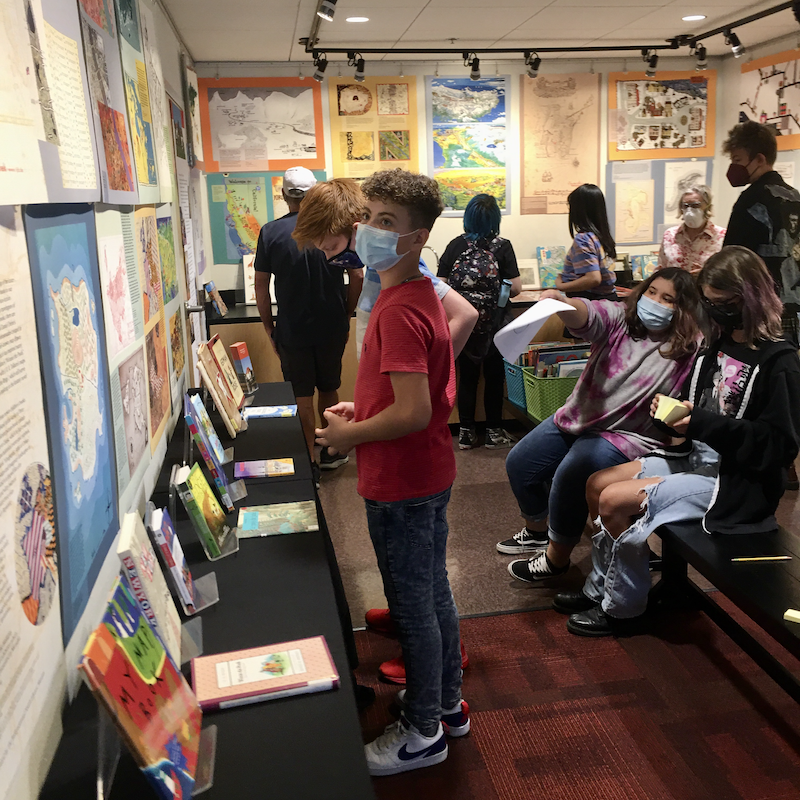
Students from Paulo Freire Freedom School explore the exhibit, Around the World in 70 Maps.
“We are excited to launch our first crowdfunding campaign,” says UArizona Regents Professor and director of the WOW Center, Kathy Short. “This is a great opportunity to support our mission of sharing global stories. With help from the community, we can continue to provide enriching exhibits that inspire people of all ages.” Continue reading

By Rebecca Ballenger, Associate Director, Worlds of Words Center
The rich and diverse stories of Arizona are on display in an original new exhibit of art, maps and books that showcase the history and perspectives of the state, highlighting this beautiful and complex place. For a limited time, the public can visit “Arizona Is a Story” at the Worlds of Words Center of Global Literacies and Literatures (WOW Center) in the UArizona College of Education.
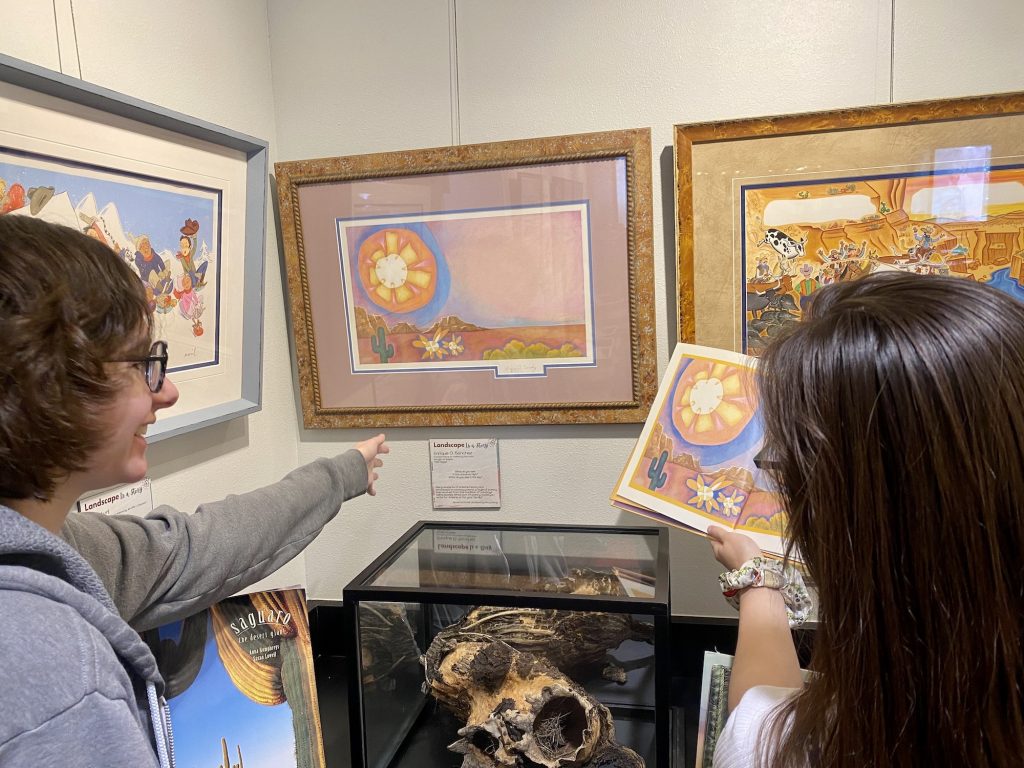
Rylan Pugliese (UArizona East Asian Studies graduate student) confers with Aika Adamson (WOW Staff) about the book, Confetti Poems.

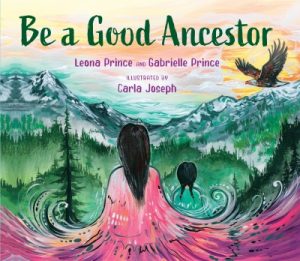 In Be a Good Ancestor, Canadian authors Leona Prince and Gabrielle Prince, issue this simple, four-word request to readers as an inspiring call to action. The authors, who are sisters, have written a poignant picturebook with themes of interconnectedness and stewardship that will resonate with readers of all ages. The repetition of the phrase, “Be a good Ancestor,” in each stanza invites readers to contemplate their roles as ancestors of future generations. Readers will hopefully recognize that the actions (or inactions) they take today have consequences that will last for decades to come. Each double-page spread features a unique call focused on the environment and on living beings, both human and non-human:
In Be a Good Ancestor, Canadian authors Leona Prince and Gabrielle Prince, issue this simple, four-word request to readers as an inspiring call to action. The authors, who are sisters, have written a poignant picturebook with themes of interconnectedness and stewardship that will resonate with readers of all ages. The repetition of the phrase, “Be a good Ancestor,” in each stanza invites readers to contemplate their roles as ancestors of future generations. Readers will hopefully recognize that the actions (or inactions) they take today have consequences that will last for decades to come. Each double-page spread features a unique call focused on the environment and on living beings, both human and non-human:
Be a good Ancestor with water
Be a good Ancestor with the land
Be a good Ancestor with living things that swim

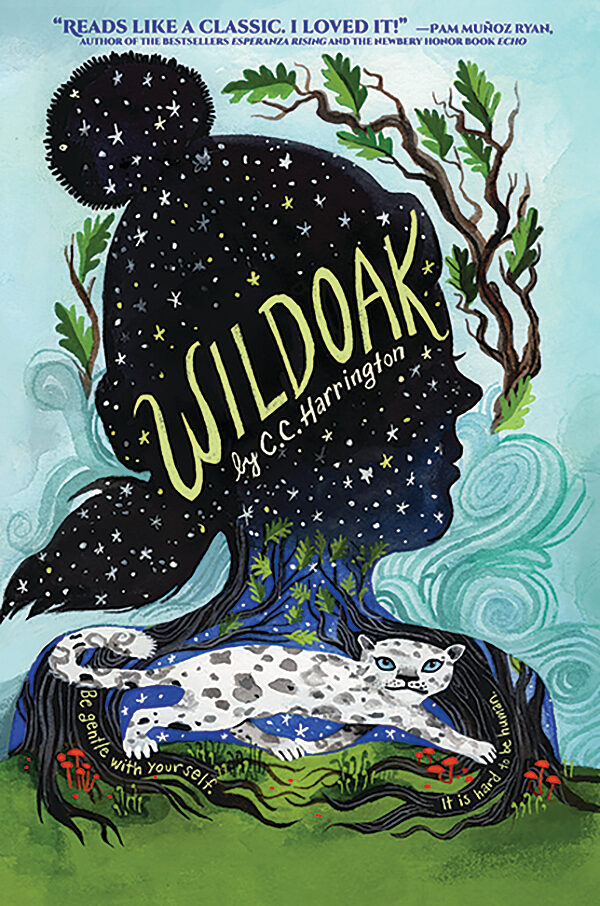 It’s London, 1963 and Maggie Stephens stutters. Because she stutters so badly, Maggie rarely speaks and finds all kinds of ways not to have to speak or read in school. Interestingly, Maggie does not stutter when she speaks to animals. Her parents, concerned (and perhaps a bit embarrassed) about her behavior, wonder if she needs to be treated at Granville, a school for children who don’t seem to fit in to the typical school. Granville is terrifying to Maggie who has heard rumors about how children are beaten if they cry. Looking for a way out of the Granville plan, Maggie agrees to an alternative plan to spend time with her grandfather in Wildoak Forest. Continue reading
It’s London, 1963 and Maggie Stephens stutters. Because she stutters so badly, Maggie rarely speaks and finds all kinds of ways not to have to speak or read in school. Interestingly, Maggie does not stutter when she speaks to animals. Her parents, concerned (and perhaps a bit embarrassed) about her behavior, wonder if she needs to be treated at Granville, a school for children who don’t seem to fit in to the typical school. Granville is terrifying to Maggie who has heard rumors about how children are beaten if they cry. Looking for a way out of the Granville plan, Maggie agrees to an alternative plan to spend time with her grandfather in Wildoak Forest. Continue reading

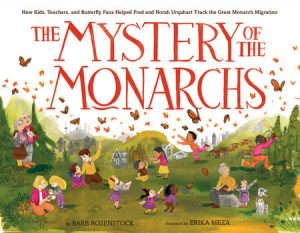 The Mystery of the Monarchs: How Kids, Teachers, and Butterfly Fans Helped Fred and Norah Urquhart Track the Great Monarch Migration by Barb Rosenstock and Erika Meza (illustrator) is a fascinating and absorbing account of how the mystery of where millions of monarch butterflies migrate over the winter was solved by Fred Urquhart, a Canadian professor of zoology and hundreds of citizens from three different countries. Fred, who lived in Toronto was a “bug man,” from the time he was eight. One of the bugs that fascinated him was the monarch butterfly. He knew a lot about the monarchs including that “during the fall, the monarchs disappeared.” Fred even wrote to a famous professor. “He asked: ‘Where do the monarchs go? He got a surprise answer: No one knew…. It was a mystery that Fred wanted to solve….” For ten years as he worked as a scientist he tried different methods of tagging the butterflies, but never heard back from anyone who found the tagged insects. Continue reading
The Mystery of the Monarchs: How Kids, Teachers, and Butterfly Fans Helped Fred and Norah Urquhart Track the Great Monarch Migration by Barb Rosenstock and Erika Meza (illustrator) is a fascinating and absorbing account of how the mystery of where millions of monarch butterflies migrate over the winter was solved by Fred Urquhart, a Canadian professor of zoology and hundreds of citizens from three different countries. Fred, who lived in Toronto was a “bug man,” from the time he was eight. One of the bugs that fascinated him was the monarch butterfly. He knew a lot about the monarchs including that “during the fall, the monarchs disappeared.” Fred even wrote to a famous professor. “He asked: ‘Where do the monarchs go? He got a surprise answer: No one knew…. It was a mystery that Fred wanted to solve….” For ten years as he worked as a scientist he tried different methods of tagging the butterflies, but never heard back from anyone who found the tagged insects. Continue reading

by Susan Corapi, Trinity International University, Deerfield, IL and Annette Y. Goldsmith, Kent State University, Kent, OH
As storms become more frequent and violent, attention to the environment and global warming is increasing. Each title here has a distinct call to action that invites readers of all ages to “rethink, refuse, reduce, repair, reuse, recycle, and revolutionize” (Pêgo, 118-121). Some are biographies of everyday citizens who stood up for protecting our natural resources, others are examples of ingenuity, and several describe the ways animal and marine life can recover when given the space and time to adapt or regain habitats. What follows is a selection from an in-process paper about environmentally-focused books, fiction and nonfiction, discussed through the double lens of the United Nations’ Sustainable Development Goals (SDGs) and the Diverse BookFinder BIPOC (Black, Indigenous, and People of Color) descriptors. We included the original place of publication because we want to explore what other countries are saying about environmental issues. Continue reading

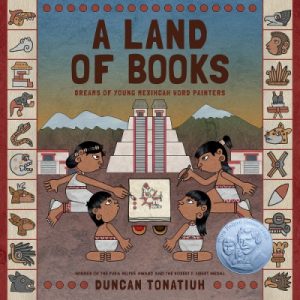 In his new book, A Land of Books: Dreams of Young Mexican Word Painters, Duncan Tonatiuh weaves verbal and visual narratives together to create an historic account of how the “Mexhicah who dwell in the valley of the volcanoes, make books….”
In his new book, A Land of Books: Dreams of Young Mexican Word Painters, Duncan Tonatiuh weaves verbal and visual narratives together to create an historic account of how the “Mexhicah who dwell in the valley of the volcanoes, make books….”
Long ago, before woodblock printing, moveable typeset and the printing press, the Mexhicah made books by painting images onto long strips of amatl, or paper, made from the bark of the amacuahuitl tree. The long strips of paper were folded accordion style and then bound by covers made from wood that were decorated with hides, feathers and jewels. The reader of the amoxtli (book) would unfold the pages so that it could be read. When the reader had finished, the amoxtli was folded and stored in the amoxcalli, the house of books. The tlahcuilohqueh, the painters of words, mixed plants and insects with clay, ash and water to create the paints they used to record the stories of the past and the present, and from which future generations would read to learn about the lived experiences of the Mexhicah.
Fortunately for readers of Duncan Tonatiuh’s newest amoxtli, the future is upon us. In Tonatiuh’s picturebook, he tells a story of Mexhicah book making from the perspective of the daughter of a tlahcuilohqueh. The young girl explains to her brother how their parents make the amoxtin. She tells him why the amoxtin are made and about the contents painted on the pages. She tells her brother that the tlahcuilohqueh need to know “a great deal” about many subjects including “religion, astronomy, warfare and history” for this is the content that fills the pages of the amoxtin.
As the story progresses, readers join the sister and brother at the flower festival where performers sing the stories printed on the amoxtin. There are no letters on the pages, only drawings that certain people like noblemen, priests and wise elders know how to read. For this reason, the amoxtin are read or sung aloud at special occasions, like the flower festival, so that all the villagers can hear the stories and see the paintings.
Readers familiar with Tonatiuh’s own amoxtin know that he draws artistic inspiration from the iconography of the Mixtec codices written centuries ago. As such, Tonatiuh’s distinctive illustrations in The Land of Books seem to authenticate the research-based narrative of the book making process featured in the text. Readers will find much of Tonatiuh’s research in the Author’s Note at the end of the text. A Glossary, Bibliography and list of websites complete the resources that readers can access to learn more about the Mexihcah and their book making process.
Tonatiuh’s picturebook serves as a history lesson about the Mexhicah culture that is not often told in schools today. History lessons sometimes imply that book making began with Gutenberg’s invention of the printing press when, in fact, books were being printed in China, Korea and Mexico long before Gutenberg began printing his texts in Europe. Fortunately, Tonatiuh’s newest picturebook provides a more accurate account of the evolution of book making which adds another layer of truth about the history of books and book making on a global scale. -Recommended by Mary L. Fahrenbruck, Associate Professor, New Mexico State University
Author/Illustrator: Duncan Tonatiuh
ISBN: 9781419749421
Publisher: Abrams Books for Young Readers
PubDate: November 15, 2022
Each month a committee of Worlds of Words advisors recommends a book published within the last year. Our hope is to spark conversations on our website and on social media about the book that expand global understandings and perceptions. Please join us by leaving a comment. You can also share your thoughts with us by using the hashtag #WOWRecommends on social media. Check out our alphabetical listing of all the books featured in WOW Recommends.

By Celeste Trimble, St. Martin’s University, Lacey, WA
Photography is part of the everyday world. Children (and adults, of course) are constant consumers of this medium in personal, social, political, economic and artistic realms. Indeed, practically every aspect of our lives is saturated by the photographic image. Not only are we consumers of photography, most of us are also producers of digital photographs. What began as an art form limited to scientists with specialized chemicals and equipment is now as quotidian as breakfast.
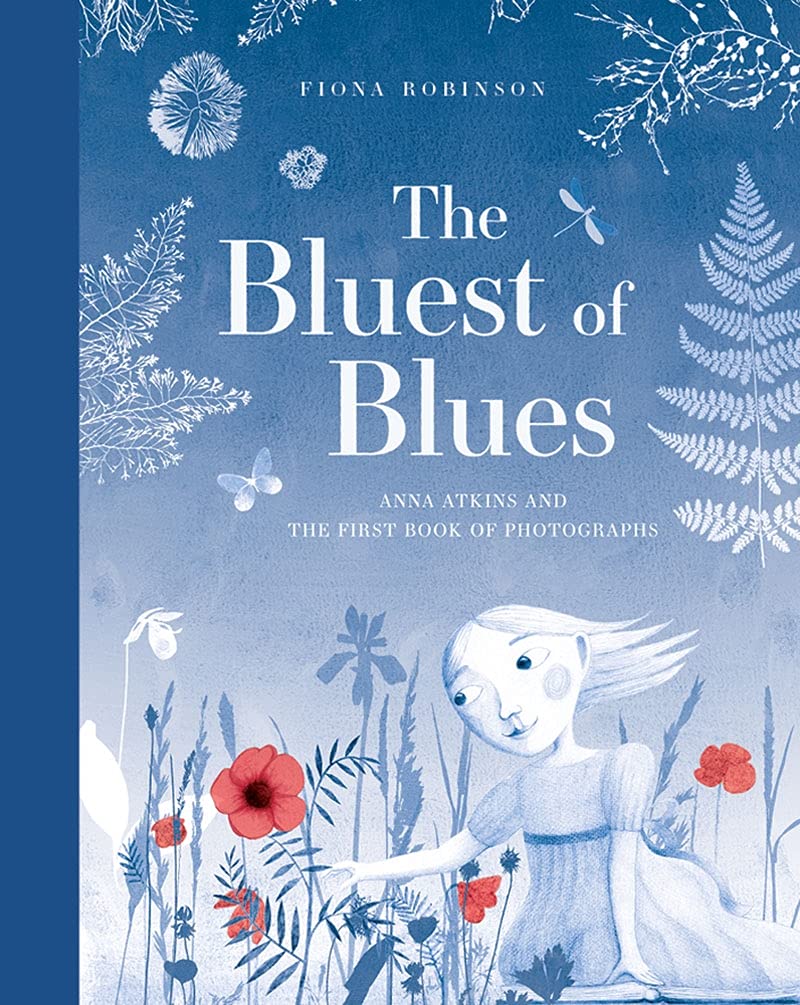 Like many artistic practices, photography is often used as a form of activism. The photographic image can help bring hidden or shadowed issues and realities into the public eye, illuminating the world as a way to create change. An excellent way to unlock photographic history and activism for children in accessible and engaging ways is through biographical picturebooks of notable photographers. These stories provide context for how photography became so ubiquitous and essential around the globe, as well as how it has and can be used as a tool for social change, perhaps inspiring young readers to do the same. Although there are a number of excellent examples, for this post I will look closely at picturebook biographies of three artists who used the photographic medium for expression and activism: Anna Atkins of England, Jacob Riis of Denmark and the United States, and Gordon Parks of the United States. Continue reading
Like many artistic practices, photography is often used as a form of activism. The photographic image can help bring hidden or shadowed issues and realities into the public eye, illuminating the world as a way to create change. An excellent way to unlock photographic history and activism for children in accessible and engaging ways is through biographical picturebooks of notable photographers. These stories provide context for how photography became so ubiquitous and essential around the globe, as well as how it has and can be used as a tool for social change, perhaps inspiring young readers to do the same. Although there are a number of excellent examples, for this post I will look closely at picturebook biographies of three artists who used the photographic medium for expression and activism: Anna Atkins of England, Jacob Riis of Denmark and the United States, and Gordon Parks of the United States. Continue reading